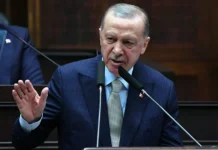November 9 marks the anniversary of Kristallnacht, “The Night of Broken Glass,” a major milestone in the persecution of Jews under the Third Reich and an unusually important event which took place in full public view, but whose significance was unfortunately not fully understood at the time.
The story ostensibly begins with the expulsion from Germany in late October 1938 of approximately 17,000 Polish Jews, whose Polish citizenship had been revoked by the Polish government. The Poles refused to allow them to enter and they were stranded on the German-Polish border under extremely difficult conditions. Among those expelled was the Grynszpan family from Hanover, whose son Herschel was living in Paris at the time. Incensed by the suffering of his parents and the others, he bought a gun, walked into the German Legation in Paris on November 7, and asked to see an embassy official. He was taken to the office of third secretary Ernst vom Rath, whom he shot and badly wounded. (Ironically, at that time vom Rath was under suspicion by the Gestapo for expressing anti-Nazi sympathies, largely based on the mistreatment of Jews in Germany.) Two days later, on November 9, vom Rath died of his wounds. That date also marked the anniversary of the Nazis’ failed Beer Hall Putsch of 1923, and at the gathering in Munich to mark that event, propaganda minister Joseph Goebbels gave a fiery speech calling for spontaneous violence against the Jews. In his words, “[T]he Fuehrer has decided that… demonstrations should not be organized by the Party, but insofar as they erupt spontaneously, they are not to be hampered.” Thus vom Rath’s murder served as the excuse for the outbreak of massive “spontaneous” violence against Jews and Jewish institutions throughout the Third Reich, which at that time included Austria.

The results were horrific. One thousand six hundred Jews were murdered (the official report by Heydrich listed only 91), approximately 1,500 synagogues were destroyed, 30,000 Jewish men were arrested and sent to Dachau, Buchenwald and Sachsenhausen, more than 7,000 Jewish shops and department stores were vandalized or destroyed. In short, a horrific blow to German Jewry, who, adding insult and economic ruin to injury, were forced to pay a fine of one billion marks (about $400 million at 1938 rates) as a punishment.
The Nazis obviously viewed Kristallnacht as an opportunity to seriously advance their goal of the elimination of Jews from German society, which at that time they sought to achieve via expulsion and emigration. The question is, what gave them the sense that there would be virtually no severe consequences for such a dramatic assault on Jewish life and property? To answer that question it is important to note two critical events which took place during the four months prior to Kristallnacht. The first was the Evian Conference convened in France, from July 6 to July 15, 1938, by president Franklin D. Roosevelt, ostensibly to solve, or at least alleviate, the plight of the increased numbers of Jewish refugees seeking to flee persecution by Nazi Germany. It was attended by representatives of 32 countries and 24 voluntary organizations, but was doomed to failure even before it began, since the invitations assured the participating countries that none of them would be asked to change their existing immigration quotas, which were the key element limiting the immigration of German and Austrian Jews.

In addition, Britain and the United States made a deal that no mention of Palestine would be allowed on the agenda and in return, the British would not bring up the fact that the United States was not even filling its existing quotas, let alone increasing them.
While many delegates expressed sympathy for the Jews living under Nazism, the only countries willing to admit large numbers of Jews were the Dominican Republic and later Costa Rica. On the other hand, the Australian delegate, trade and customs minister T.W. White, bluntly explained that as his country had “no real racial problem, we are not desirous of importing one.”
To understand the full impact of the failure of the Evian Conference, it must be emphasized that at this point the Nazis had still not decided to implement the Final Solution and were encouraging Jewish emigration from the Reich. In fact, Hitler responded to news of the conference by saying that if other nations would agree to admit the Jews living in the Reich, he would help them depart “even on luxury ships.”

The second event was the Munich Agreement of September 29-30, 1938, in which England and France agreed to allow Germany to annex portions of the territory of Czechoslovakia inhabited by Germans (Sudetenland), which included most of the country’s border defenses, fortifications and heavy industrial districts, a decision which left the country practically defenseless.
The betrayal of the Czechs to appease Hitler was a clear sign that the British and French were unwilling to oppose Hitler by force, and that he could achieve his initial targets for territorial expansion by threat alone, with no danger of reprisal, which naturally only increased his appetite for additional conquests.

The failure of the West to firmly oppose the Nazis from the very beginning of their rule, and take the measures necessary to alleviate the plight of their victims and stop their territorial expansion paved the way for Kristallnacht and ultimately for the Final Solution. And those are lessons which should be remembered not only today, on the anniversary of Kristallnacht, but every day.
The author is director of the Simon Wiesenthal Center’s Israel Office and Eastern European Affairs. His latest book, with Ruta Vanagaite, is Musiskiai; Kelione su Priesu (Our People; Journey With an Enemy), which deals with Lithuanian complicity in Holocaust crimes. The book has been published in Lithuanian and Polish and is slated for publication early next year in Hebrew and Russian. His websites are www.operationlastchance.org and www.wiesenthal.com. He can be followed on Twitter @EZuroff



























The Evian meeting was a hugh farce, All these nations were plain hypocrite.